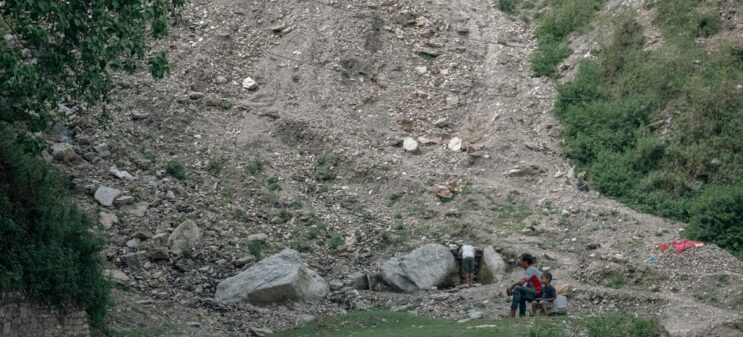3 min read
Sols 4257-4258: A Little Nudge on Kings Canyon
Earth planning date: Friday, July 26, 2024
Today’s 2-sol weekend plan is our first taste of a new location for a potential sampling campaign. We call today’s plan type: Drill Sol 1 – triage contact science.
We arrived this morning to a lovely new workspace. The science team has been eagerly observing these lighter-toned rocks first from orbital data, then from our drive direction imaging as we approached them, and now they are right in front of us! Because the science team had been contemplating the possibility of sampling these rocks, the drive that we planned on Wednesday ended in just the right orientation in case the team does decide to drill here. Variables that matter are the rover roll and pitch – so that we can both drill the rock safely but also then deliver sample to our two internal instruments, CheMin and SAM. Additionally, the rover heading needs to be just right so that we can communicate clearly with Earth – perhaps for several weeks if we remain for a campaign! We have specially certified Rover Planners called Sampling Campaign Rover Planners (SCaRPs) and they go into action on Drill Sol 1 to confirm that all those special considerations for drilling are met including finding the actual target on the ground that we want to assess.
This morning, the SCaRPs swiftly found a great target and we named it “Kings Canyon.” Kings Canyon National Park is in the southern Sierra Nevada range in California. Kings Canyon itself is a glacially carved canyon more than a mile deep! The national park also contains some of the world’s largest stands of Giant Sequoia trees.
The Drill Sol 1 plan has two purposes – first to determine if our target, Kings Canyon, meets the science teams criteria for sampling – for example, is it compositionally interesting? The second objective is to determine if the rock and specific target, are safe to drill; can it handle the forces from the drill, for example. We call this activity a “drill preload test.” Therefore, the primary activities in today’s plan are the preload test and contact science on Kings Canyon – we will first brush the target to remove surface dust and then take close-up imaging with our MAHLI instrument and compositional data with our APXS instrument.
In anticipation of a notional full drill on Monday, today’s team was very conservative with the amount of power we used. This meant limiting our remote sensing observations to only those that the team thought were most important to get down timely to support a drill campaign. We’ll use our ChemCam instrument to also study Kings Canyon, ChemCam provides complementary compositional data to the APXS observations. Together these observations will help inform the science about whether they want to proceed with sampling. Today’s plan also includes our typical environmental monitoring observations that we take at a regular cadence.
Hope your weekend is as busy and fun as Curiosity’s!
Written by Elena Amador-French, Science Operations Coordinator at NASA’s Jet Propulsion Laboratory
Share
Details
Related Terms
https://science.nasa.gov/blogs/sols-4257-4258-a-little-nudge-on-kings-canyon/













